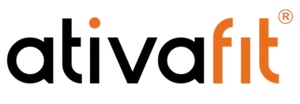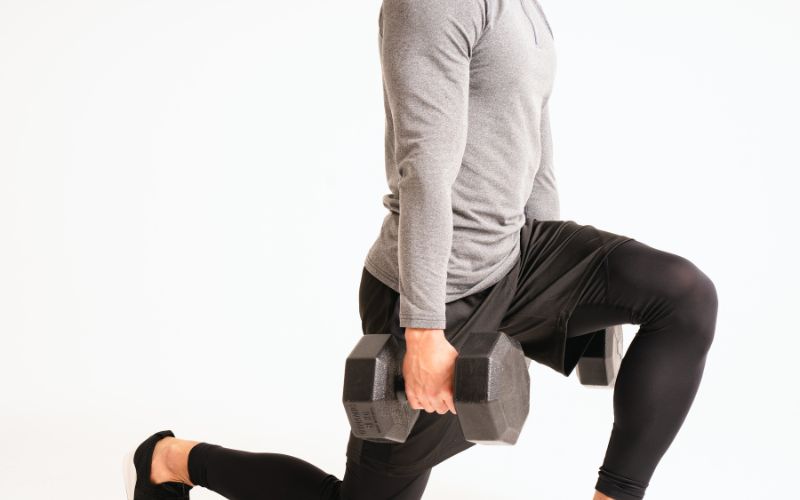Leg workouts are crucial for achieving total-body strength, balance, and optimal athletic performance. When you add dumbbells to your leg routine, you introduce resistance that helps build lean muscle, boost stability, and burn more calories.
Dumbbell leg exercises can be performed at home or in the gym, offering a smart way to develop your quads, hamstrings, glutes, and calves with minimal equipment. This guide explains the benefits, top exercises, and how to choose the right dumbbells to make your lower-body training more effective and accessible.
What Are Dumbbell Leg Workouts?
Dumbbell leg workouts are resistance exercises that use hand-held weights to target the muscles of the lower body. These workouts are designed to strengthen and tone the legs by adding extra load to basic bodyweight movements. Exercises like squats, lunges, and deadlifts become more challenging and rewarding when done with dumbbells.
They’re especially useful for people training at home or anyone looking to avoid machines or barbells. With just a set of dumbbells and proper form, you can develop powerful legs and a well-balanced lower body.
Looking to level up your lower body training? Ativafit adjustable dumbbells are the ideal solution for effective home leg workouts. Their compact design, quick weight adjustment, and sturdy grip make them suitable for exercises like squats, lunges, and deadlifts. Whether you're a beginner or building serious strength, Ativafit gear supports your progress with every rep. Shop Ativafit Dumbbells Now and start building stronger legs today.

Key Benefits of Dumbbell Leg Workouts
Training your legs with dumbbells builds strength, improves movement, and tones muscles efficiently, without needing bulky gym equipment. These benefits make dumbbell leg workouts perfect for home fitness or any functional training plan.
Builds Functional Strength
Dumbbell leg workouts imitate real-life movements to improve everyday strength. Strong legs make everyday tasks easier and safer, such as climbing stairs or picking up objects. This involves working several joints and muscles together to increase coordination and power.
Improves Balance and Stability
Holding dumbbells during leg exercises challenges your core and balance. Movements like lunges and single-leg Romanian deadlifts help build stability in your hips, knees, and ankles, thereby reducing the risk of injury and improving control.
Targets All Major Muscle Groups
Dumbbells help isolate and activate specific leg muscles. Squats work the quads and glutes, deadlifts hit the hamstrings, and calf raises focus on the lower legs. You can easily shift focus with slight changes in grip or stance.
Burns More Calories
More muscle engagement equals higher calorie burn. When you incorporate resistance training into leg day, your body uses more energy to move and recover, resulting in increased fat loss and muscle gain over time, even after your workout has concluded.
Great for Home Workouts
You don’t need bulky machines or a gym membership. Dumbbell leg workouts are compact, efficient, and perfect for small home spaces. Adjustable dumbbells, like Ativafit’s, can replace an entire rack with a single, simple design.
How to Warm Up Before Dumbbell Leg Workouts

Warming up is essential before starting any leg workout. It prepares your muscles, increases blood flow, and reduces the risk of injury. A good warm-up activates your hips, knees, and ankles—all of which are heavily involved in leg training. Here's a simple warm-up you can do in 5–7 minutes before using dumbbells:
-
20 bodyweight squats
-
10 walking lunges (each leg)
-
15 glute bridges
-
30 seconds of high knees or jumping jacks
-
10 hip circles (each direction)
Once you're warm, your body will be more mobile and ready to handle resistance from your dumbbell exercises.
Best Dumbbell Leg Exercises You Can Do Anywhere
These exercises are perfect for home or gym training, especially when paired with Ativafit’s adjustable dumbbells and other innovative fitness gear. Each move targets different muscle groups in your lower body, supporting full-body strength and mobility.
Dumbbell Goblet Squats
For goblet squats, hold an adjustable dumbbell vertically at chest level with both hands. Squat down, keeping your chest up and your core tight. Push through your heels to return to a standing position. This move builds strength in your quads, glutes, and core, and the compact dumbbell size allows for perfect control and depth.
Dumbbell Reverse Lunges
For lunges, use a pair of dumbbells—one in each hand. Step one leg backward into a deep lunge, keeping your torso upright and your weight evenly distributed. Push through your front leg to return, then switch legs. This exercise improves balance and hip mobility, tones the glutes and hamstrings effectively, and adds resistance for added effectiveness.
Dumbbell Romanian Deadlifts
For Romanian deadlifts, hold two adjustable dumbbells in front of your thighs. With a slight knee bend, hinge at your hips and lower the weights down your legs while keeping your back flat. Stand tall to reset. This is excellent for developing hamstring and glute strength, especially when done with progressive loading.
Dumbbell Step-Ups
For doing Step-Ups, Step onto a sturdy weight bench while holding dumbbells at your sides. Push through the front foot to lift yourself, then step down slowly. This functional movement builds power in the quadriceps and glute muscles while also enhancing single-leg stability and coordination.
Dumbbell Sumo Squats
For sumo squats, stand with your feet wider than shoulder-width apart, with your toes slightly pointed out. Hold a single dumbbell between your legs. Lower into a deep squat, keeping your knees pushed out and spine straight. This variation targets the inner thighs and glutes, making it perfect for shaping and building strength.
Dumbbell Calf Raises
For calf raises, stand tall with a dumbbell in each hand. Raise your heels as high as possible, squeeze your calves, and then lower slowly. Repeat with control. This is one of the best exercises to tone, define, and strengthen your calves, especially when combined with added dumbbell resistance.
Dumbbell Bulgarian Split Squats
For Bulgarian split squats, place one foot behind you on a stable surface, such as an Ativafit workout bench. Hold a dumbbell in each hand and lower into a controlled single-leg squat. Push back up through your front heel. This exercise challenges your quads, glutes, and core stability while improving balance and unilateral strength.
How to Choose the Right Dumbbells for Leg Workouts

Choosing the right dumbbells can make or break your leg workout. Here’s what to look for:
-
Start light, progress smart: Beginners should use 10–20 lbs, then increase as needed.
-
Adjustable dumbbells: Ativafit’s adjustable sets allow quick weight changes between sets and exercises.
-
Comfortable grip: Look for textured or rubberised handles for a firm and safe grip.
-
Sturdy construction: Opt for dumbbells that are stable, compact, and durable enough to withstand heavy use.
For compound leg movements, heavier weights (20–50 lbs or more) are often ideal, as your legs are large, powerful muscle groups.
What to Do After Your Leg Workout
Cooling down after leg day is just as important as the workout itself. It helps reduce muscle soreness, prevent stiffness, and improve flexibility. Spend 5–10 minutes stretching the muscles you just trained. Focus on the quads, hamstrings, glutes, and calves to support recovery and increase long-term mobility.
Here are a few effective stretches to include:
-
Hamstrings: Seated forward fold or standing toe touch
-
Quads: Standing quad stretch (hold one ankle behind you)
-
Glutes: Lying figure-four stretch or seated pigeon pose
-
Calves: Standing wall push or downward dog position
For faster recovery and improved flexibility, simple tools can make a big impact. Use a foam roller or yoga mat to release tight areas and promote healthy blood flow. To strengthen your legs smartly, try a half-ball balance trainer. For deeper muscle relief, our innovative hot & cold massage gun combines temperature therapy with targeted vibrations to ease tension, reduce inflammation, and support overall muscle recovery more effectively.
Mistakes to Avoid in Dumbbell Leg Training
Avoid these common errors to get better results and reduce injury risk:
-
Using poor form: Always keep your back straight and knees aligned with your toes.
-
Going too heavy too soon: Focus on control, not just lifting heavier.
-
Neglecting warm-up: A 5-minute dynamic warm-up preps your joints and muscles.
-
Rushing the reps: Slow, controlled movements activate more muscle and build strength faster.
-
Ignoring rest: Your legs need recovery. Train 2–3 times per week, allowing for rest in between.
Final Thoughts
Dumbbell leg workouts are one of the most effective ways to train your lower body at home or in the gym. With exercises like goblet squats, Romanian deadlifts, and lunges, you can build strong, toned legs without the need for bulky equipment. Whether you're just starting or looking to upgrade your training routine, dumbbells offer a flexible and powerful way to elevate your leg day. Start strong. Stay consistent. And train smart with Ativafit’s adjustable dumbbells, your legs will thank you.
Frequently Asked Questions
1. Can I build muscle with dumbbell leg workouts alone?
Yes. With consistent training and progressive overload, dumbbell leg workouts can help you build strong, defined legs without needing barbells or machines.
2. How often should I do dumbbell leg workouts?
Two to three sessions per week are ideal. Allow at least 48 hours between sessions for proper muscle recovery and growth.
3. Do I need adjustable dumbbells?
Adjustable dumbbells are ideal for leg workouts because they allow you to quickly adjust the weight without needing multiple pairs.
4. Are dumbbell leg exercises safe for beginners?
Yes, as long as you use the correct weight and maintain proper form. Beginners should start with lighter dumbbells and simpler exercises, such as squats and lunges.
5. What weight should I use for dumbbell squats?
Start with 15–20 lbs if you’re new. As you gain strength and stability, gradually increase the load to match your fitness level.





